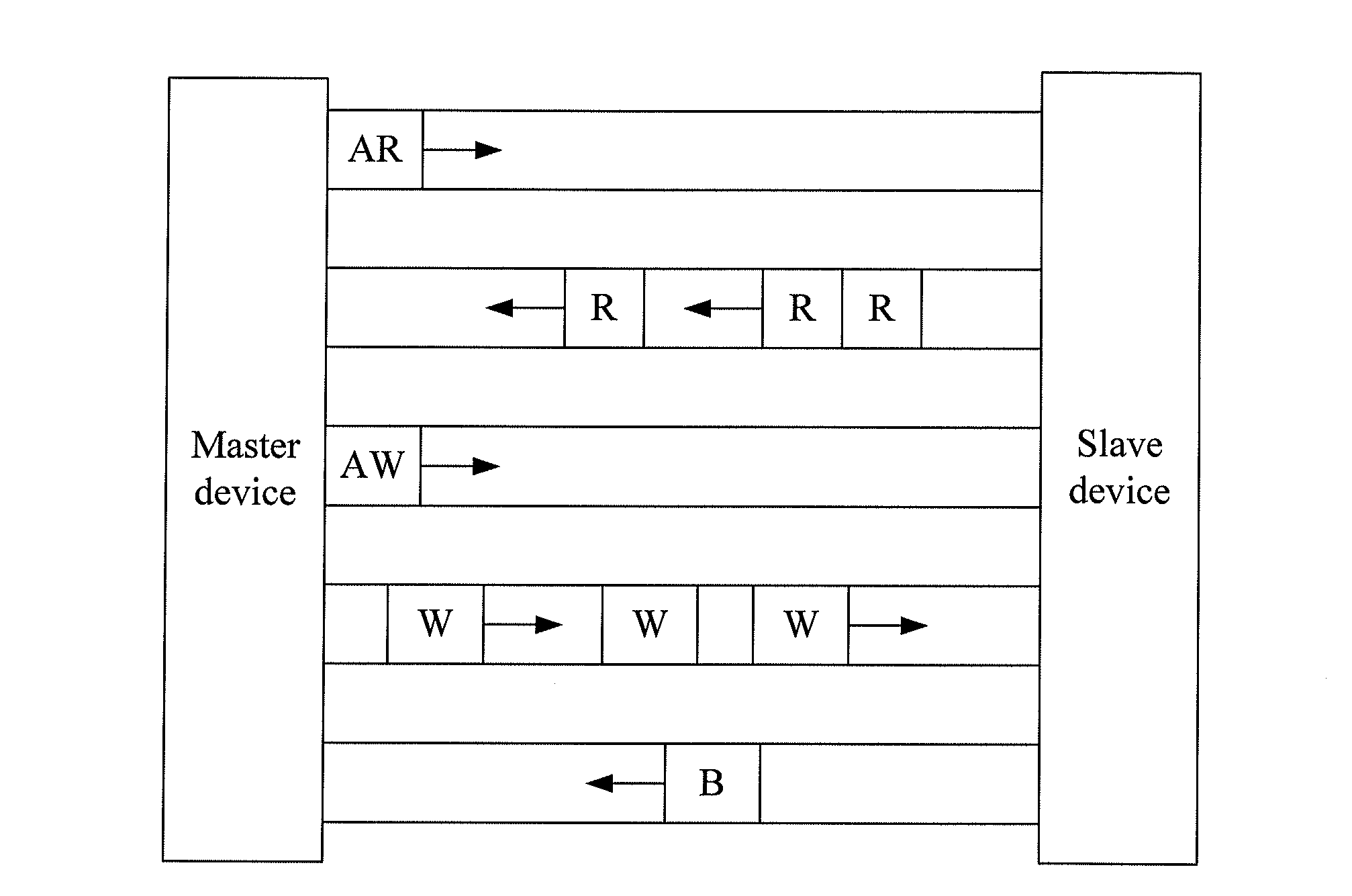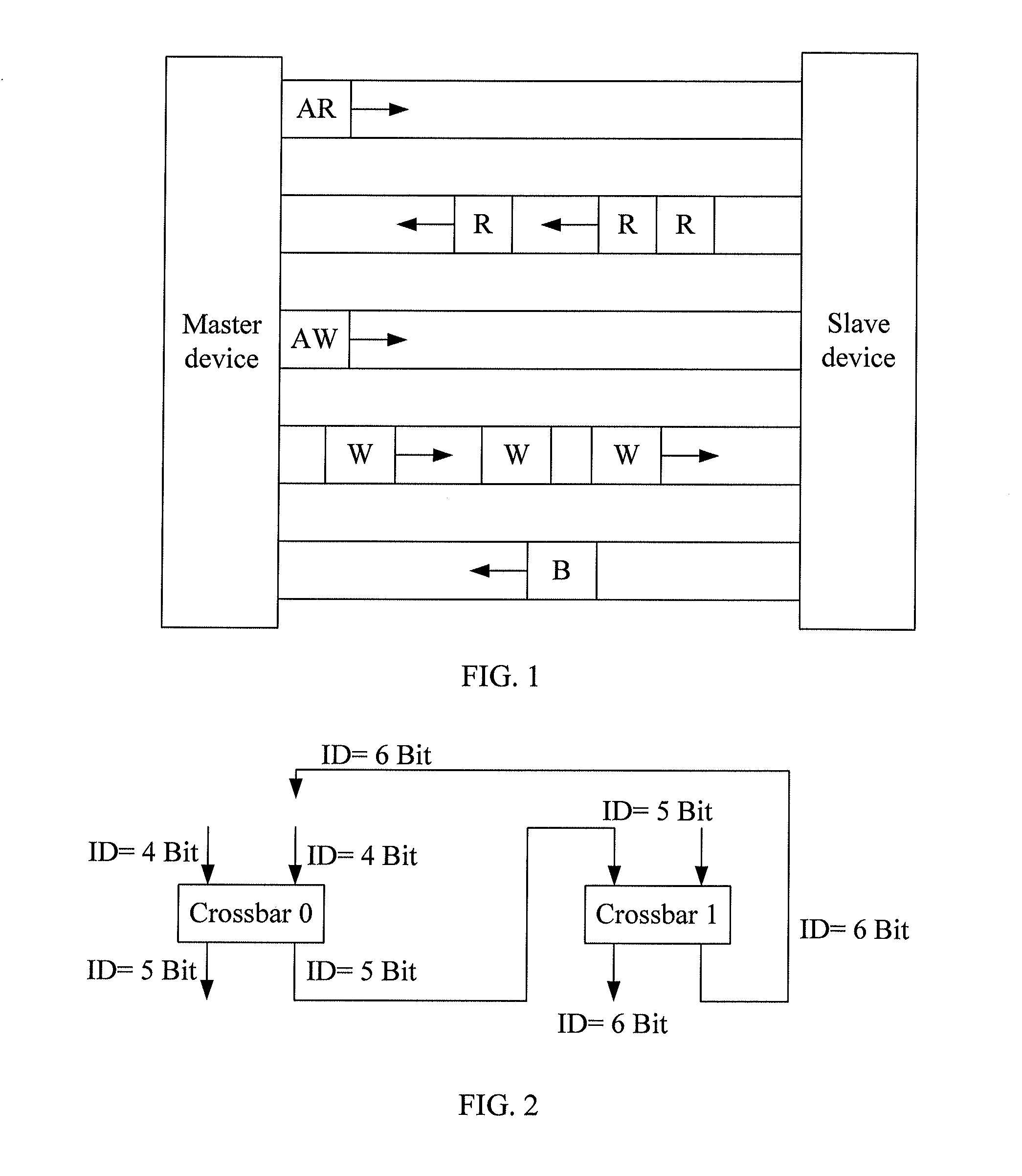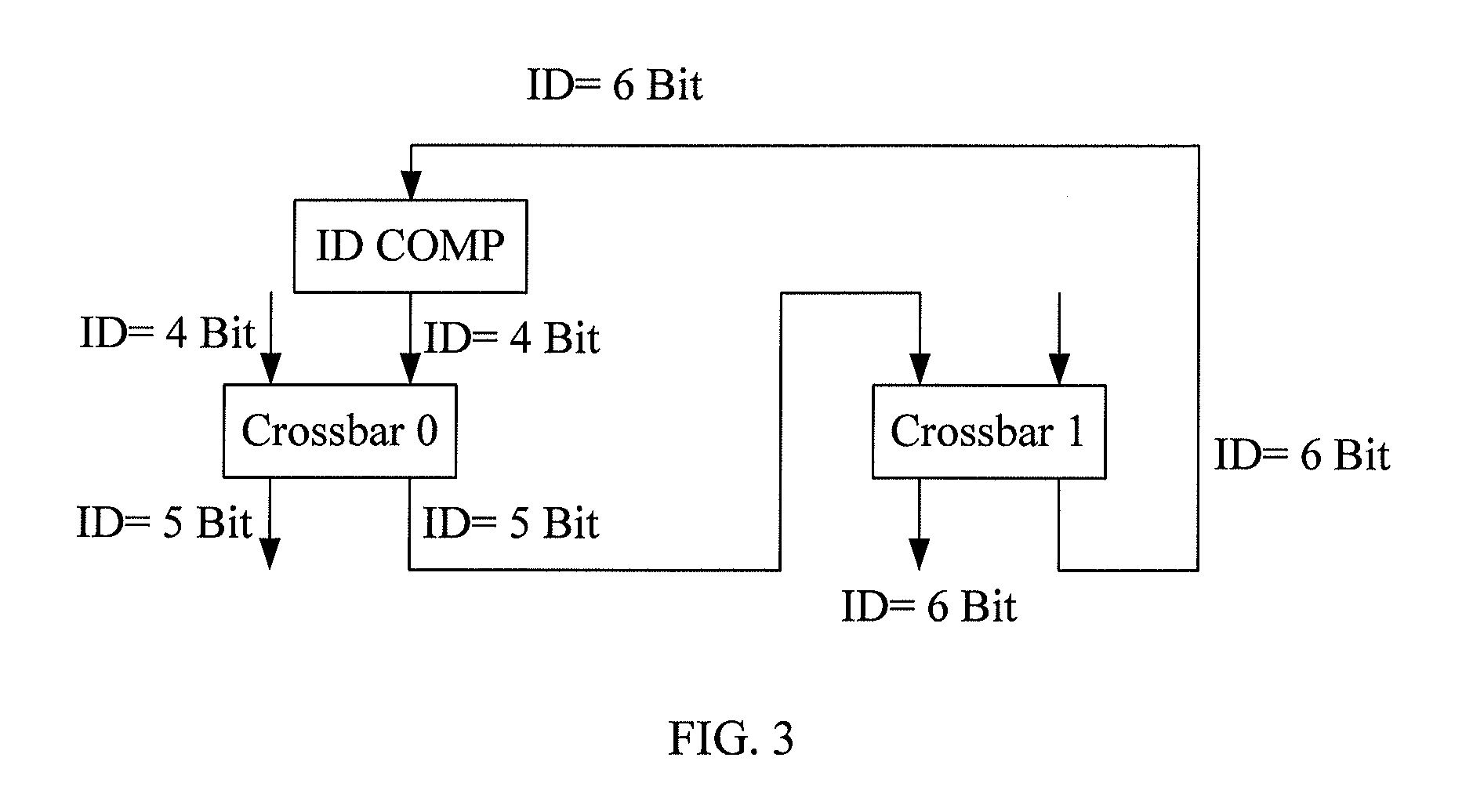System on chip and transmission method under axi bus
a transmission method and axi bus technology, applied in transmission, electrical equipment, instruments, etc., can solve the problems of reducing the efficiency of the bus, affecting the mutual access between the axi crossbars, and consuming large chips. , to achieve the effect of avoiding the loss of id information, reducing the cost of id information, and not increasing the cost or compressing the id
- Summary
- Abstract
- Description
- Claims
- Application Information
AI Technical Summary
Benefits of technology
Problems solved by technology
Method used
Image
Examples
first embodiment
[0040]FIG. 4 shows a structure of a system on chip (soc) in the The system includes a master device 41, a first extending module 42, a first interconnection structure 43, a first subtracting module 44, a second interconnection structure 45, and a slave device 46. The interconnection structure here may be understood as an on-chip bus structure, especially an on-chip AXI bus structure.
[0041]The master device 41 is configured to send a transmission request that carries an ID indicating a serial number of the master device.
[0042]The first extending module 42 is configured to add N bits into the ID carried in the transmission request, where N is a positive integer equal to a sum of bits added by all interconnection structures in a longest loop of a system into the ID carried in the transmission request that passes through the interconnection structures.
[0043]The first interconnection structure 43 is configured to add M bits into the ID carried in the transmission request output by the f...
second embodiment
[0052]FIG. 5a is a method flowchart in the This embodiment is applicable to a scenario where multiple master devices access a slave device. This scenario requires the ID for differentiating between master devices. Taking the sending of a transmission request as an example, as shown in FIG. 5a, the method in this embodiment includes the following steps:
[0053]Step 51: The first extending module receives a transmission request that carries an identifier (ID) indicating a serial number of a master device and sent by a master device; adds N bits into the ID carried in the transmission request, where N is a positive integer equal to a sum of bits added by all interconnection structures in a longest loop of a system into the ID carried in the transmission request that passes through the interconnection structures; and sends the transmission request that carries the ID added with N bits to a first interconnection structure.
[0054]The interconnection structure may be a crossbar, or a topolog...
third embodiment
[0059]FIG. 6 is a method flowchart in the This embodiment is applicable to a scenario where multiple master devices access a slave device. This scenario requires the ID for differentiating between master devices. Taking the sending of a transmission response as an example, as shown in FIG. 6, the method in this embodiment includes the following steps:
[0060]Step 61: The second extending module adds M bits into an ID carried in a transmission response sent by a second interconnection structure when a slave device intends to access a master device connected with a first interconnection structure, where M is a positive integer equal to the number of bits added by the first interconnection structure into the ID carried in the corresponding transmission request that passes through the first interconnection structure; and sends the transmission response that carries the ID added with M bits to the first interconnection structure.
[0061]The interconnection structure may be a topology such a...
PUM
 Login to View More
Login to View More Abstract
Description
Claims
Application Information
 Login to View More
Login to View More - R&D
- Intellectual Property
- Life Sciences
- Materials
- Tech Scout
- Unparalleled Data Quality
- Higher Quality Content
- 60% Fewer Hallucinations
Browse by: Latest US Patents, China's latest patents, Technical Efficacy Thesaurus, Application Domain, Technology Topic, Popular Technical Reports.
© 2025 PatSnap. All rights reserved.Legal|Privacy policy|Modern Slavery Act Transparency Statement|Sitemap|About US| Contact US: help@patsnap.com



